Tasmanian Devil Sarcophilus harrisii


The Tasmanian Devil, the size of a small, stocky dog, became the world's largest marsupial carnivore
following the extinction of the Tasmanian Tiger (Thylacine) in the 1930s.
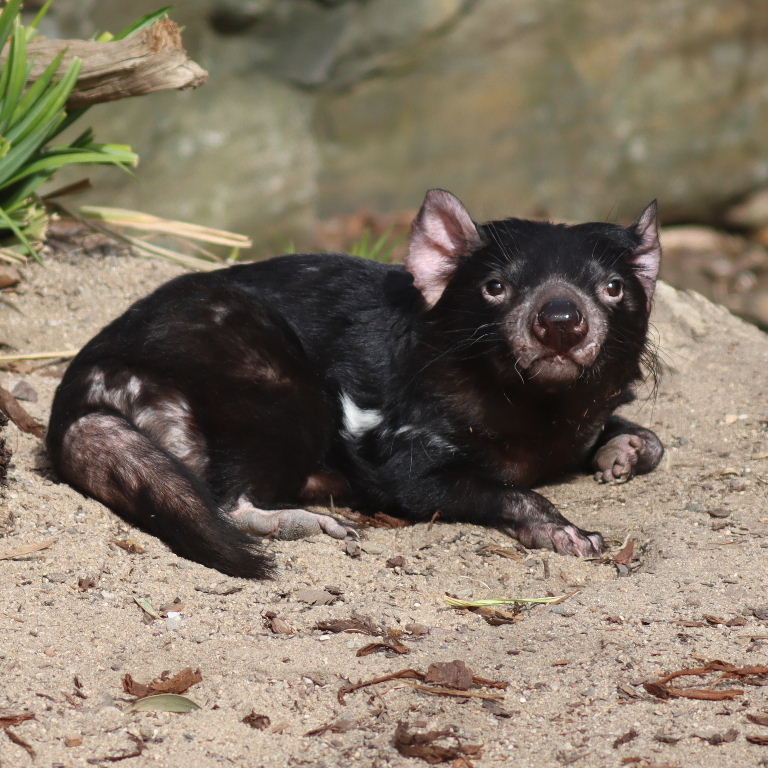


Native to Australia, until recently it survived only on the island of Tasmania but a small, breeding population
was re-introduced to mainland Australia in 2020.



The hands. They can climb and swim. Mainly solitary, they hunt at night
and acquired the name "devil" partly due to appearance but largely due to their night-time screeching.



The teeth. They have one of the strongest bites per unit of body mass. They hunt live prey and scavenge carrion.
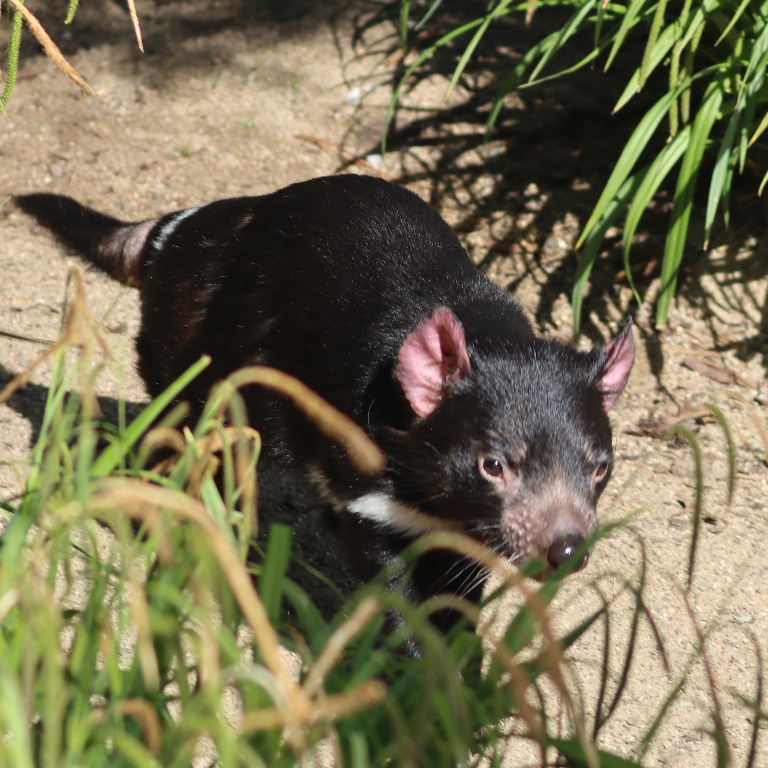
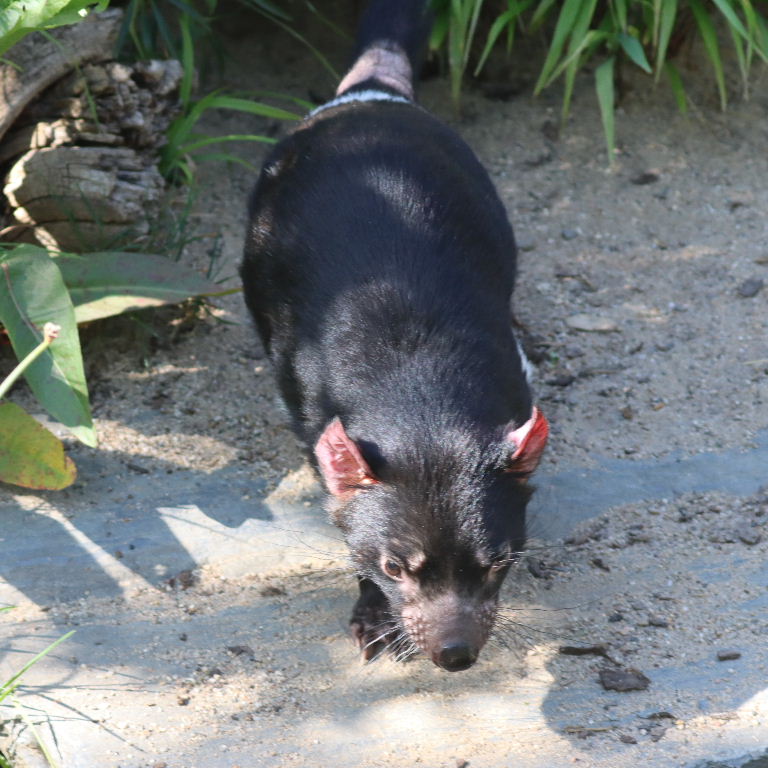
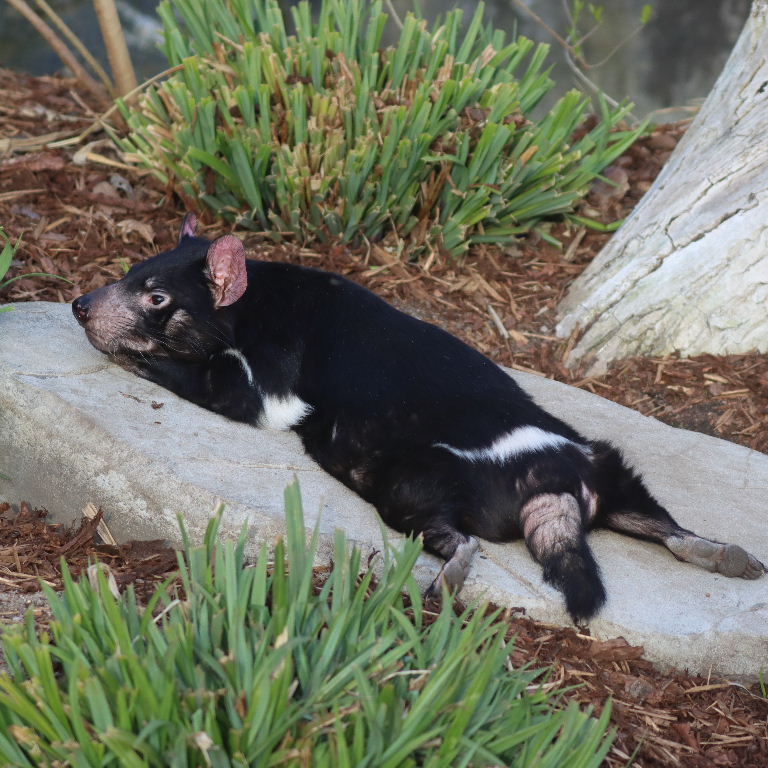
Body fur is black or dark brown usually with a white chest bar or other white patches; some have no white.
The tail stores body fat.
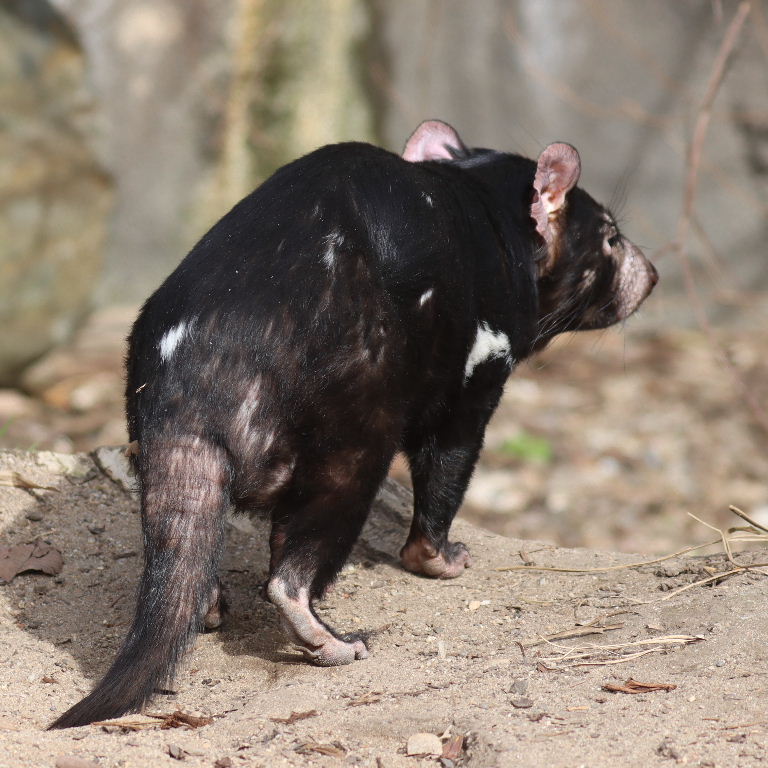

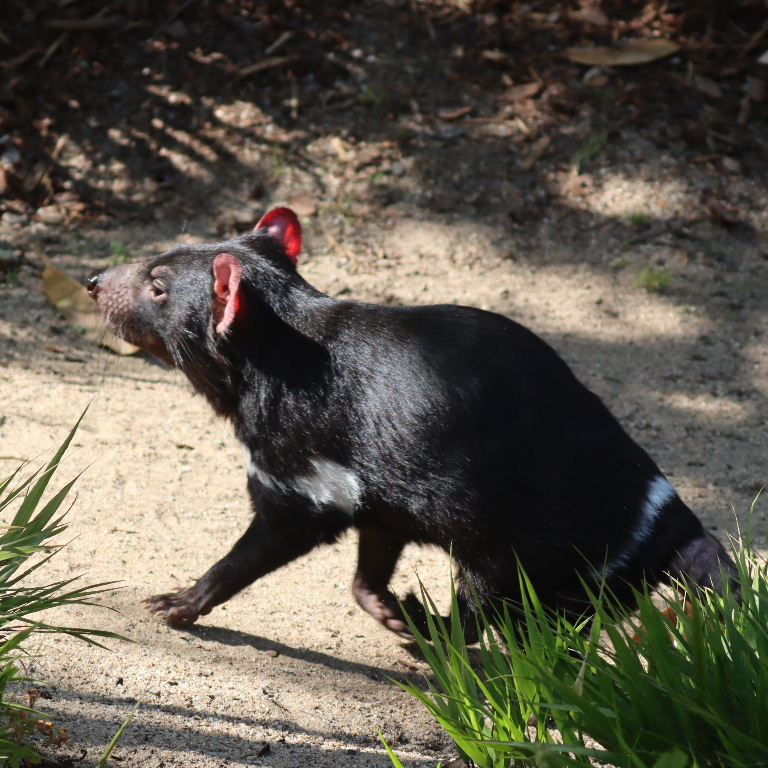
The Tasmanian Devil is endangered. Previous population declines resulted from bounty hunting (to protect livestock)
and more recent declines (80% decline since the mid-1990s) are due mainly to habitat disturbance, road kill and disease.



